
In many countries, especially the Western parts of the world, Halloween is nothing more than a one-night stand. A chance for kids to dress up and obtain mounds of candy that will send them on a sugar-fueled rage for the following week and contribute to the ongoing obesity epidemic. For adults, it’s a chance for costume parties and alcohol-fueled all-nighters. But in some countries the Day of the Dead has more spiritual roots, and if you happen to be spending time in Cancun, Mexico you’ll find yourself drawn in by the week-long festivities that take place before and after the actual Día de los Muertos.
There are varying levels of participation for the Day of the Dead in Mexico, mostly related to the religion the family or individuals in question happen to follow. As a general rule this includes the belief — or at the very least, the custom of “belief”, if only at face value — that the spirits of the dead make their way back to the land of the living for one night out of the year. And Mexico, as with other countries around the world, takes the time to ensure that the visit is a pleasant one, filled with respect and homage to the lost loved ones.
It starts with shrines, not only in the homes of the individuals, but also in the supermarkets and the major parks and plazas throughout the various cities. These shrines are then stocked with private possessions of the fallen family members or friends, as well as tokens of appreciation from the family and friends, along with simple items such as food, a bottle of their favorite wine, fruit, photos, a pack of their favorite cigarettes and so on and so forth.
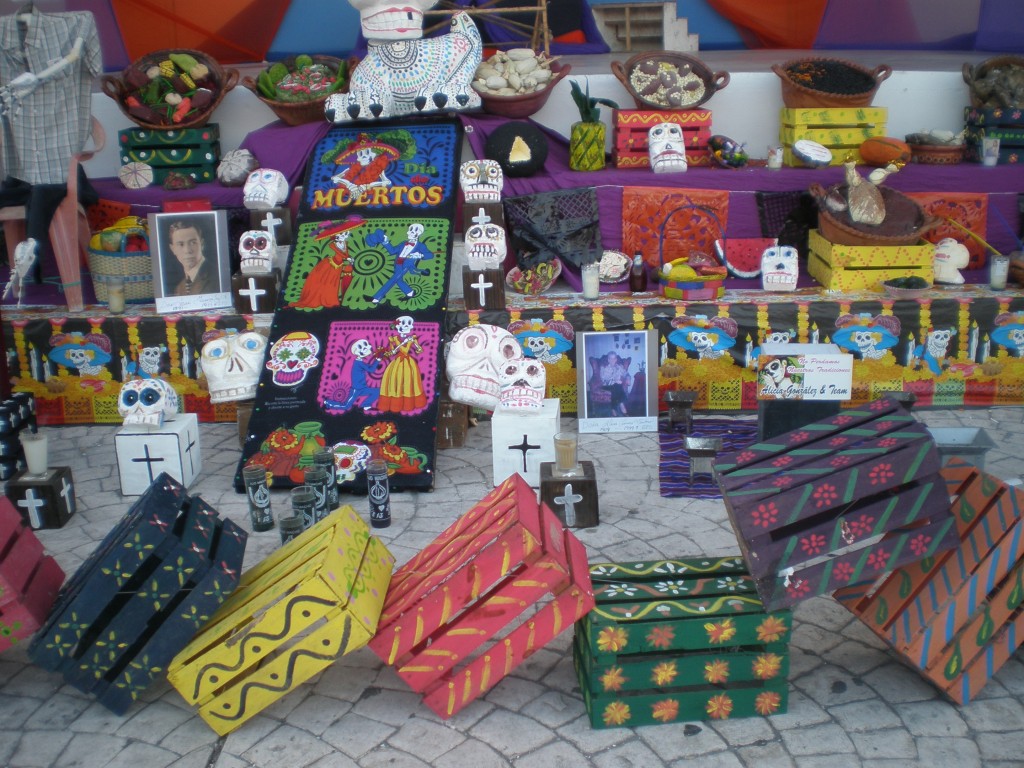
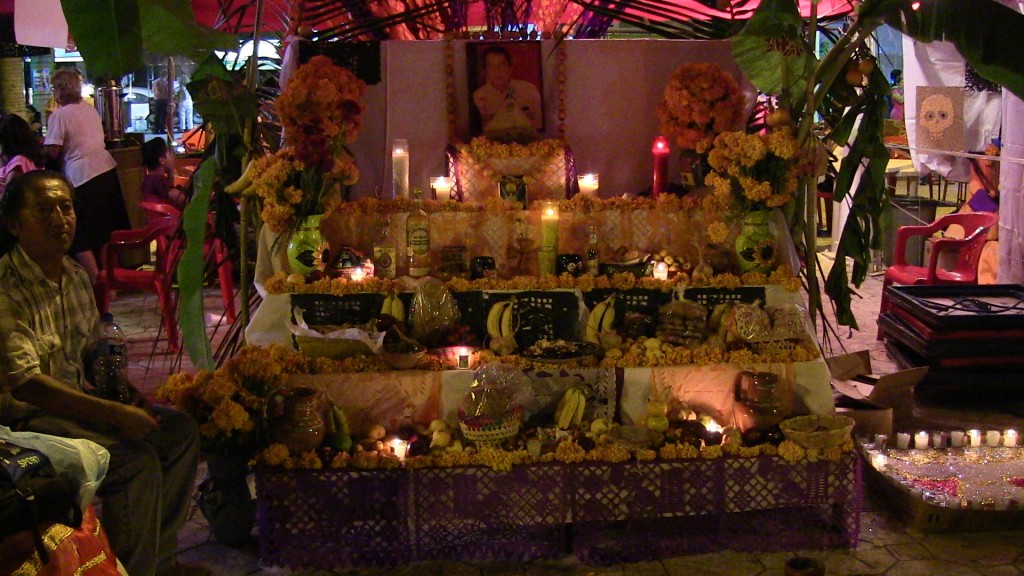
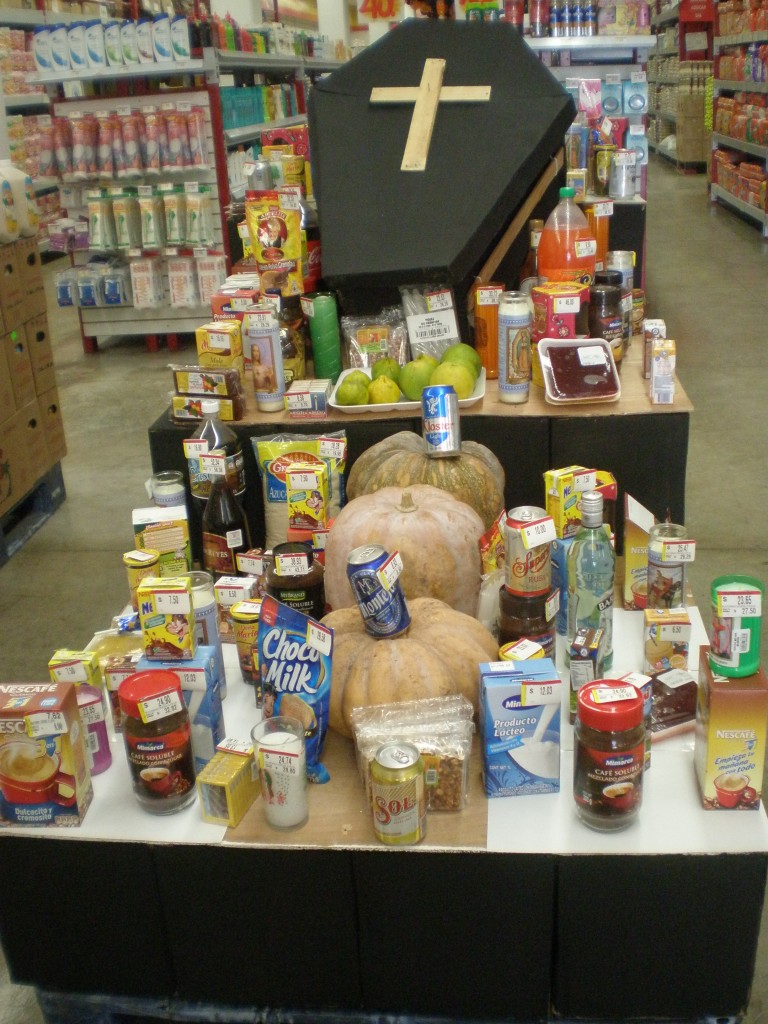
These shrines are set up around a week before the actual Day of the Dead which, contrary to popular belief, does not take place on the 31st of October. Rather, it is Día de Todos Los Santos on the 31st, then Día De Los Inocentes on the first of November, and then Día de Muertos on the second of November.
In most cases, once November 2nd has passed, the items are then consumed by the family who erected the shrine in the first place. And in the case of supermarkets it’s a general marketing ploy that originated in the West; you won’t see private or personal items at the shrines in these locations. Rather, they are stocked with the “discounted” items that the store in question wants its consumers to purchase for their own private shrines in the home.
Dead Bread (as I like to call it) is the most popular item sold in and around the streets of Mexico during the week leading up to the end of November. Locally, it’s called Pan de los Muertos, which literally translates into “bread of the dead”. You can find it in every supermarket across the country, and every bakery or kitchen in the home will be preparing this sweet bread for the festivities.
The bread is then offered as a token of appreciation when you visit the house of a friend or family member to be placed on the shrine or eaten at the table, and you will be offered this bread upon arrival at the home of anyone celebrating the festivities. In different places around Mexico the custom changes. Cristina’s home town in Tabasco, for example, uses a special type of tamale as opposed to the dead bread. Even though the bread is still baked, tamales are commonly offered when entering a home, and given to any guests who visit.
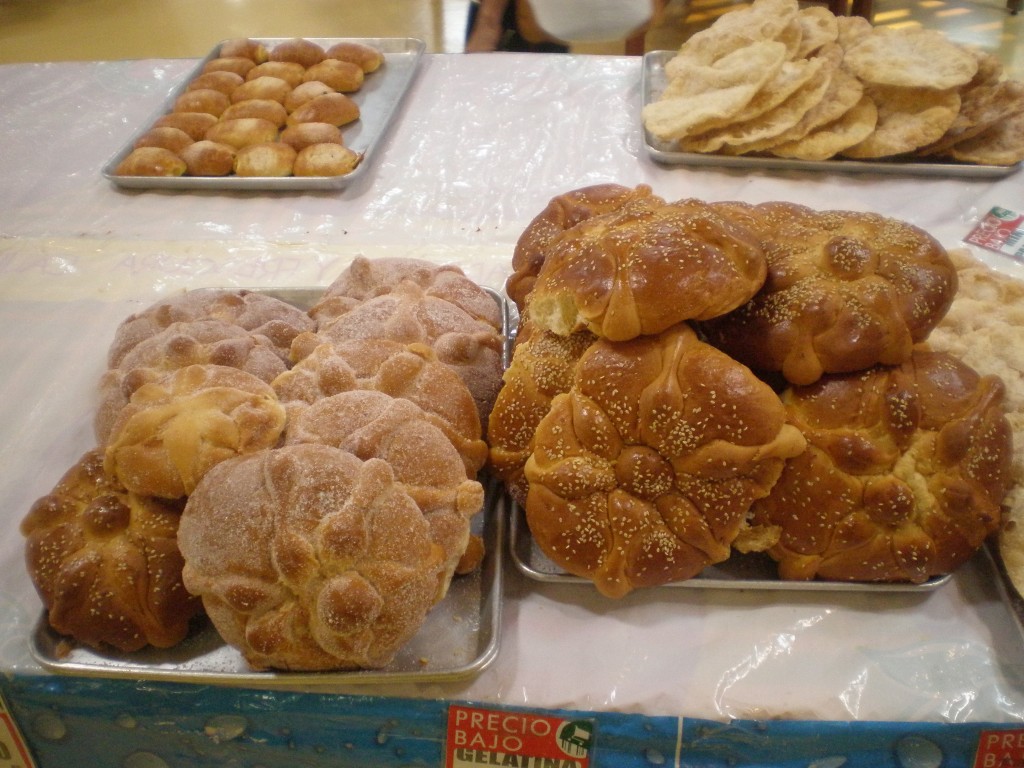
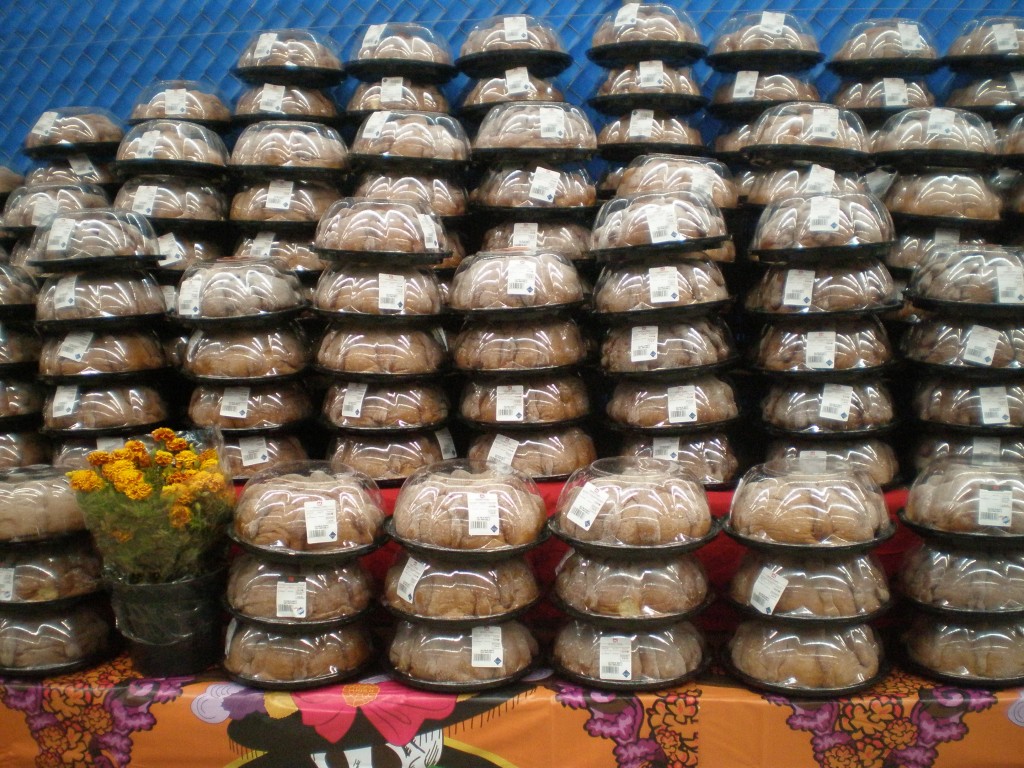
Cancun is unique in the fact that it has a number of Western foreigners living here, so the traditions from the United States and Canada where children dress up and wander the streets looking to “trick or treat” and score free candy door to door actually exists. It’s not hugely popular, but you will see the random family with their kids walking the streets in the more “modern” sections of the city where they have adopted the foreign customs.
There are also a number of Halloween parties that take place throughout Cancun due to the Western influence, especially in the Hotel Zone. Mostly these relate to costume parties at the various hotels. But if you happen to be living on the mainland Cancun, it’s the traditional style of celebrations you’ll be taking part in, including several nights at the zocalo in the heart of the city at the Parque Las Palapas where the main stage is set up as a giant shrine filled with personal possessions and donations, and the surrounding plaza is packed with tents that have their own shrines.
There’s also plenty of games for the children, a general carnival-style atmosphere, plus face-painting for those looking to replicate the world-famous Catrina look, which was handed down from the Aztec goddess of the dead legend. This is actually probably the most famous “Mexican” reference that most Halloween celebrations immediately recognize, because the Catrina makeup is seen around the world during this time of year.
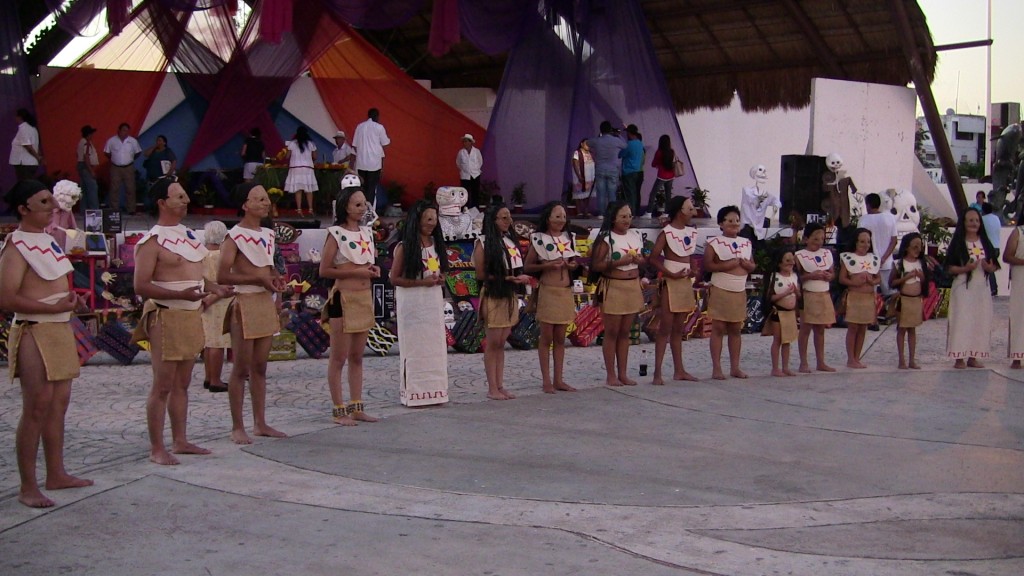
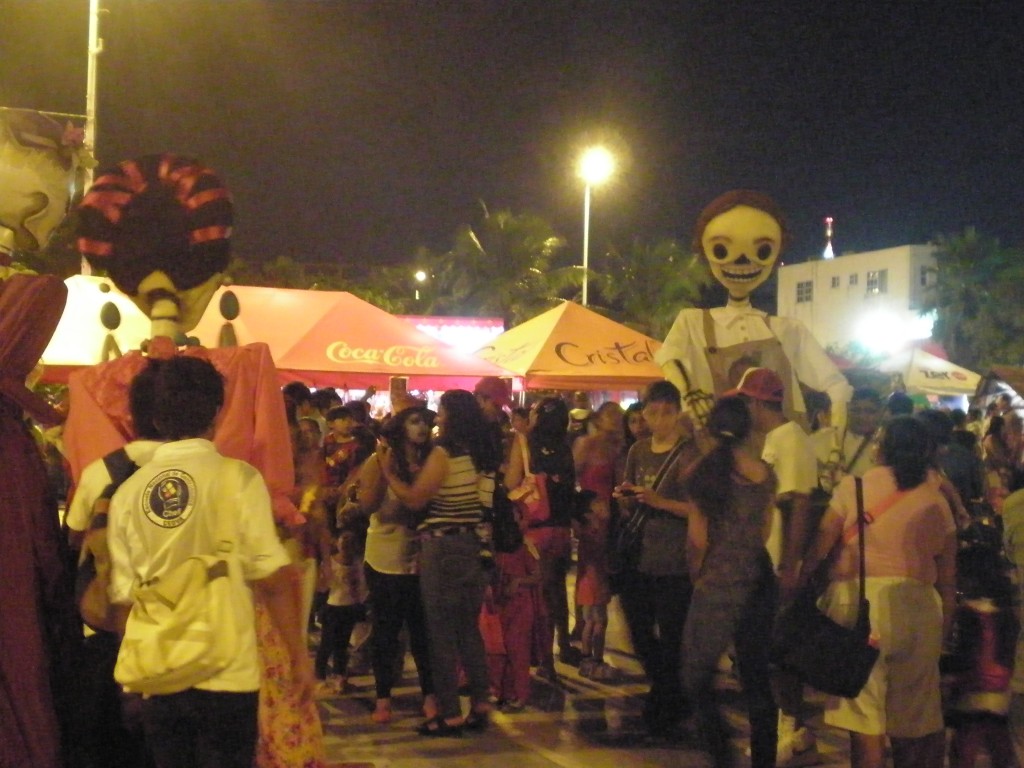
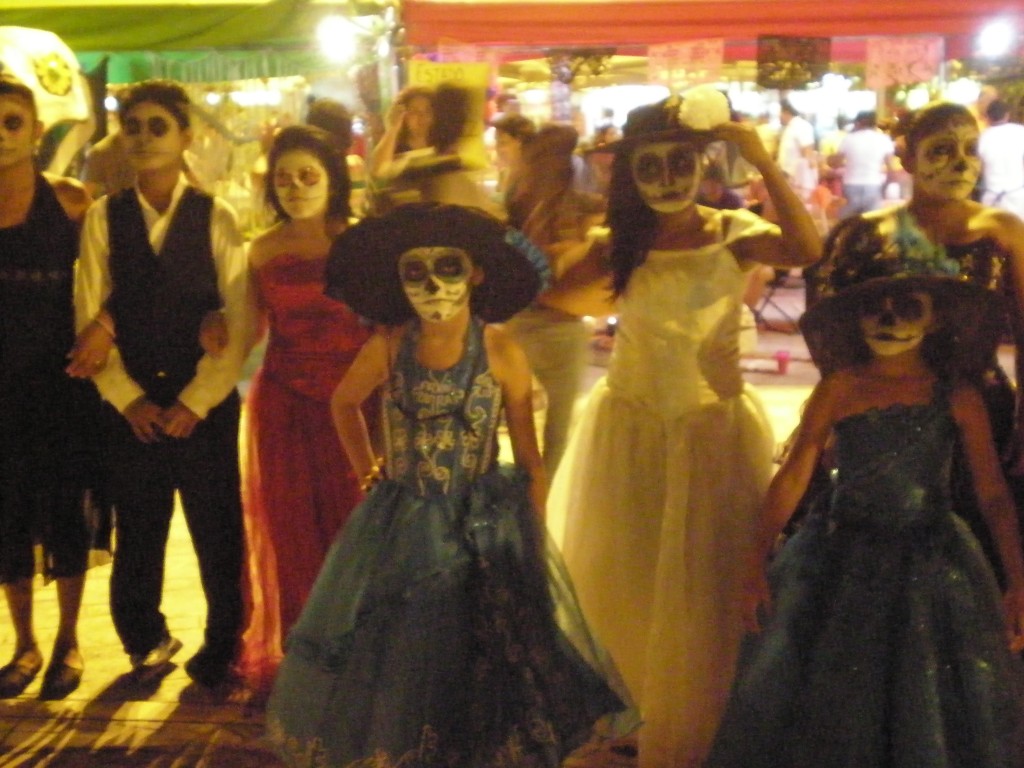
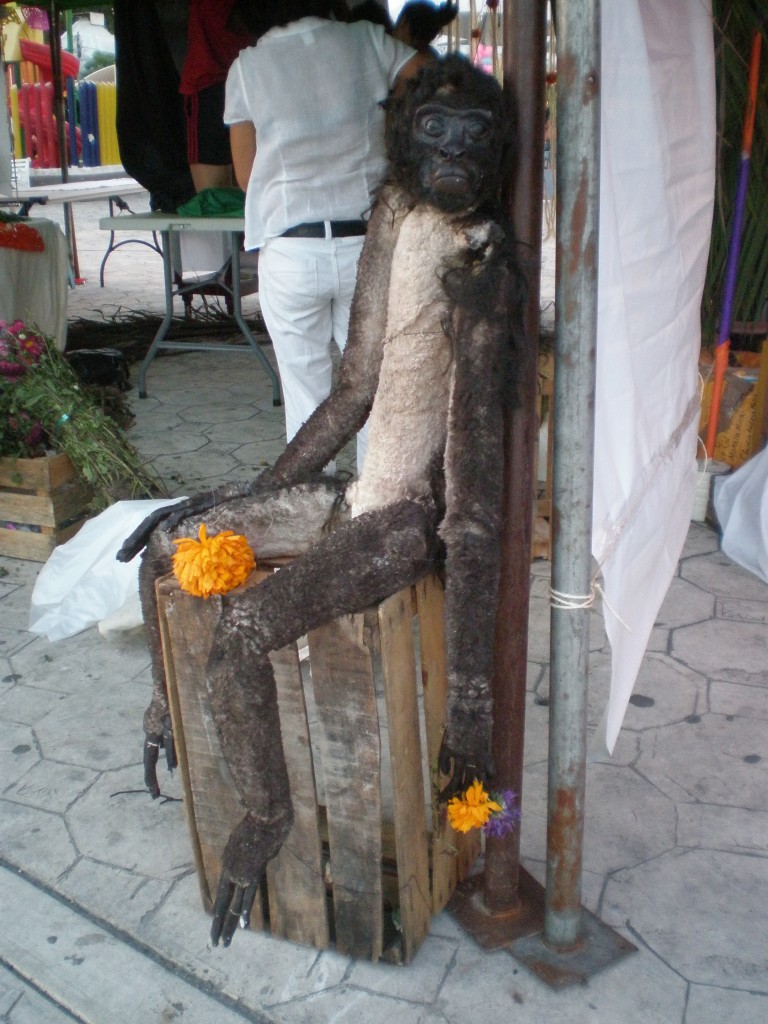
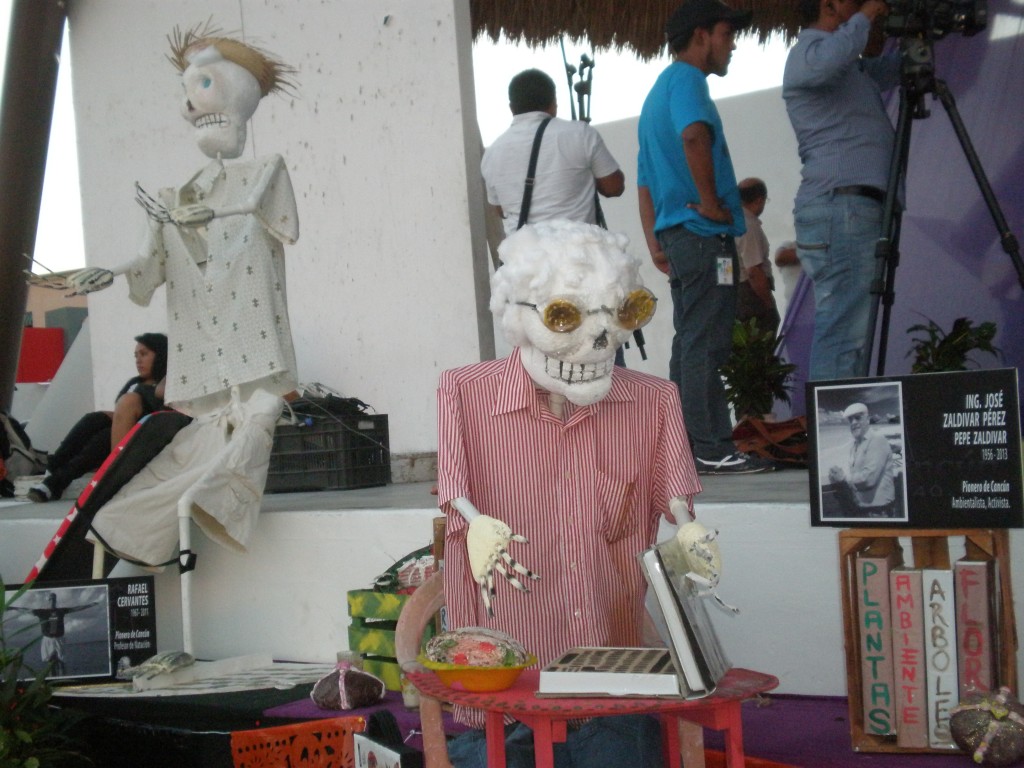
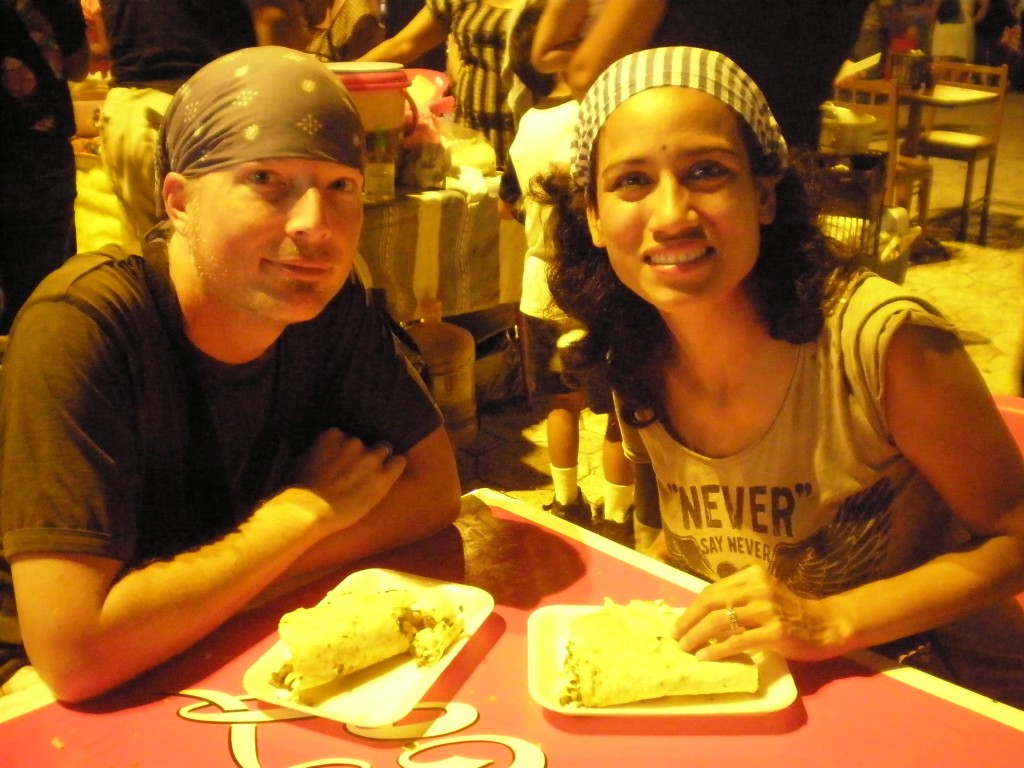
Bearing in mind that the Latin culture enjoys a good festival, and the fact that the celebrations take place over three days and not just one, as well as the three to four days preceding the actually “trilogy” of special nights, there’s usually a week-long series of parties, celebrations and overall recognition. On top of which, there are also private ceremonies of those who truly believe the dead return during these three nights of the year and will hold private rituals within their homes to communicate with those who have passed (we passed several of them on the way home the other night from the celebrations on October 31st at the Parque Las Palapas; people chanting in their homes while holding hands with special candles and incense burning, communicating with the spirits of the dead).
All in all, celebration the days leading up to the Día de los Muertos in Cancun is a somewhat mixed affair, with a little bit of American, a little bit of Pagan, a little bit of Catholic, a little bit of Maya and other traditions all mixed in together. Your level of participation and style depends entirely upon your own belief structure, and there’s something for everyone.
Don’t forget to check out the YouTube video for some clips of the celebrations on Thursday and Friday night at the Parque Las Palapas.
For more Mexico-specific posts, don’t forget to check out:
Cost of Living in Cancun, Mexico
Modern Mexico: The Real Story
Cancun, Mexico – Beyond The Hotel Zone
Living Off The Grid in Cancun, Mexico
Finding an Apartment in Cancun
Our Favorite Beaches in Cancun, Mexico
Tacos in Cancun – Tacos Rigo
Tacos in Cancun – Los Aguachiles
Beaches in Cancun – Playa Tortuga
Beaches in Cancun – Puerto Morelos
Pasearte in Cancun
If you are looking for more information on Cancun or Mexico in general, you can pick up our Live Like a Local guide for the city, packed with other restaurant recommendations, apartment and condo referrals, tips on navigating the public transportation system, local negotiation tips and strategies, market and discount day overviews and more!
Sign up for our free newsletter for several-times-a-week, your-eyes-only travel and entrepreneur tips, plus receive a complimentary copy of our 85-page starter book on location independence and living abroad, 30 Ways in 30 Days.

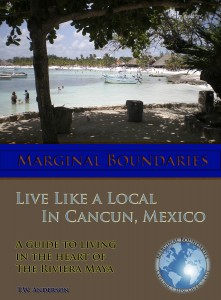







@Franca it also varies depending on where you are in Mexico. For example, our current location in Tabasco = the celebration is a LOT different than in Cancun. Where there you have the “dead bread” that people buy + bake, here in Tabasco it’s all about tamales. But yeah…the shrines are set up in front of houses/etc. here just as they are in Cancun.
These kind of celebrations are more familiar to the ones my grandmother use to have and told me all about it when I was a kid. From where I’m from (South of Italy) we don’t have Halloween, even though recently has become another excuse to party and dress up (never like in the US though). Like in Cancun, my grandma also believed that the dead would return somehow, she would even leave the table set with food and drinks overnight for the dead to help themselves, it was more a gesture of welcoming back I think. It’s interesting to see how these traditions are starting to die off a little or at least they are changing and evolving, it’s a bit of a shame too, I like old traditions even if most of the time I don’t believe in them.
Indeed, Mandy. Communication is always at the root of our humanity….ethereal or no!
What a fabulous post! I knew a tiny bit about the way Mexicans celebrate the day of the dead but I loved reading about the details and the customs. It must be comforting to reach through to the other side once a year, to contact those we’ve lost (if you believe in that of course).
There were always Latin communities in the U.S. where I grew up, but never any celebrations like what they have down here! It’s a lot of fun for sure, Jennifer!
I remember learning about Day of the Dead festivals in my high school Spanish classes. I’ve never been to them though, but they look like great fun!
It’s a blast, Mary Always a week-long celebration and lots of good times had by all!
Always a week-long celebration and lots of good times had by all!
I have always wanted to participate in a proper Dia De Los Muertos and very much enjoyed your images.
Cheers, Kenin
Awesome stuff man! It’s great to see insight into such an important cultural tradition.
Aye, Freya; lots of different ways people bring out the dead here in Mexico.
Wow, it does seem to be a huge celebration in Mexico. I agree with Bram, in Belgium where I’m from, it really is a more solemn celebration.
Cheers, Frank
Indeed, let’s keep that hope alive!
Interesting article Tim, I was just asking my (latina) wife the other day about how they celebrate in Latin countries. Nice to see the celebration of dead ones in Mexico and hope it never gets cheapened to what we have in North America.
Frank (bbqboy)
Cheers, Bram.
Yeah, in Mexico it’s a week-long celebration of those who have passed, and reflection. The only ones getting drunk or gorging on candy are the foreigners who live here as well as the few Mexicans who emulate the American traditions because they want to be just like the northerners.
I find that most cultures outside of the U.S. treat All Saints Day, Day of the Dead with gravity and respect as opposed to commercialism…although that still exists here to some small degree.
Enjoy the dinner!
Nice and informative post! Unlike in many western nations, here in Belgium we don’t celebrate Halloween. Instead, November 1 is All Saints Day, a day originally meant for reflection and when people went to mass. (We don’t do that anymore though, especially myself, since I’m a die hard atheist 😉 ). On November 2, All Souls Day, we visit cemeteries with the family and spent some quiet time thinking about people that have passed away. Afterwards there’s always a family dinner, with coffee and cakes for dessert. So it really is a quiet time of ‘celebrations’ and not at all an excuse to get drunk or eat tons of candy. I honestly despise that.
Anyways, I’m off to my grandmother’s for dinner right now!